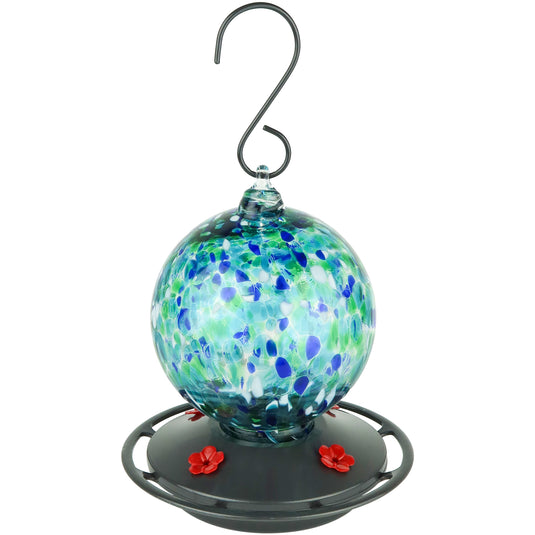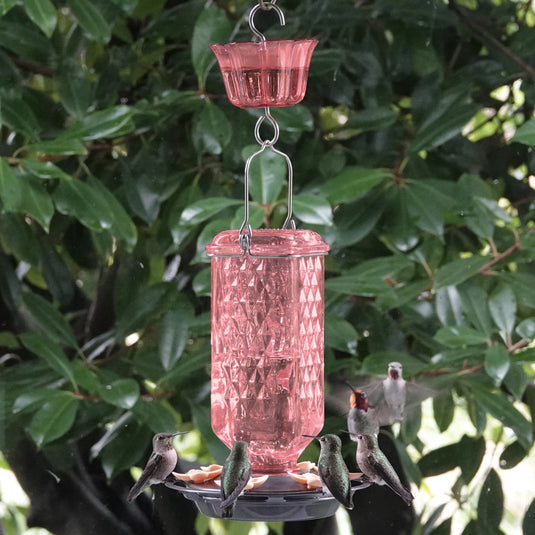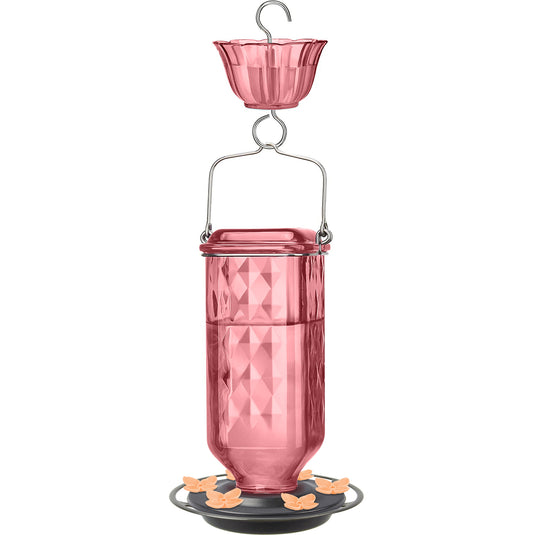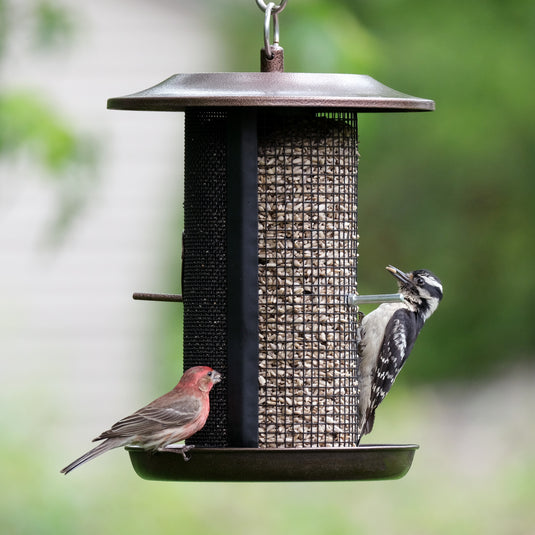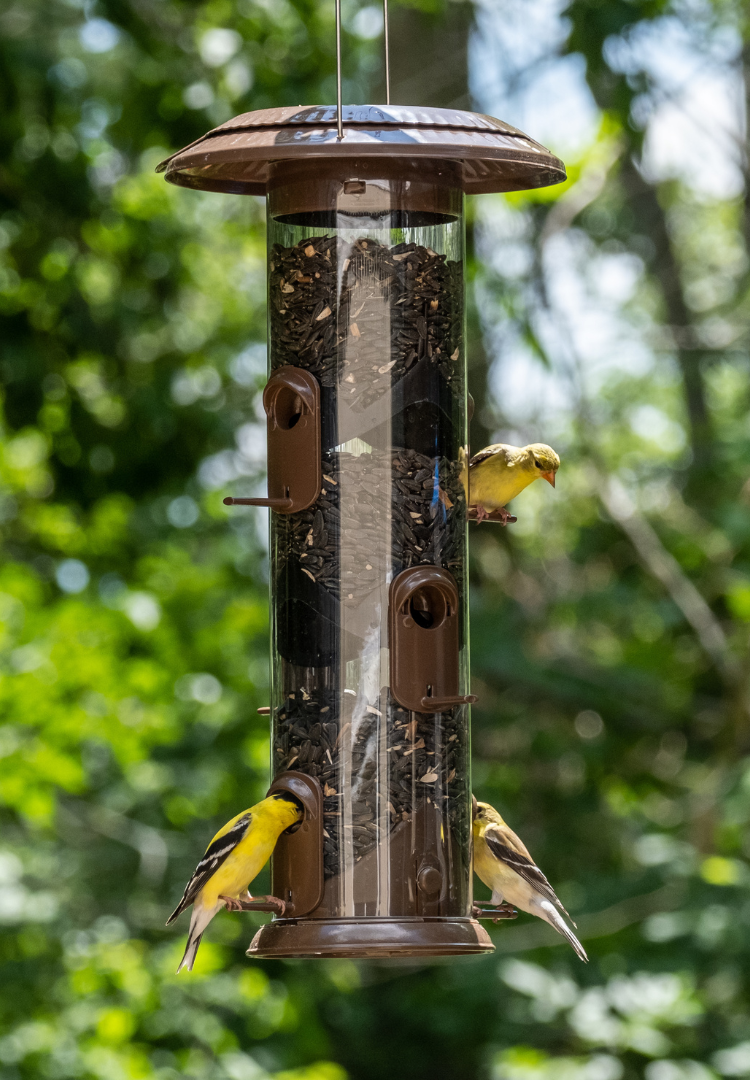As fall approaches, many of us will decorate our porches and lawns for Halloween, Thanksgiving and to celebrate the season. But once the holidays are over, don’t throw away those pumpkins, corn stalks or straw bales! Give your old fall décor a new purpose by transforming it into food and shelter for birds and other backyard critters this season.
Pumpkins


Pumpkin seeds for birds
Did you know that pumpkin seeds are good for the birds? High in calories, carbs and healthy fats, pumpkin seeds are a great source of nutrition for wild birds, especially during migration periods and cold weather. The seeds can be offered raw, but for longer lasting seeds and if feeding in warm weather, you can prepare them by roasting them in the oven at 325 degrees Fahrenheit (160 degrees Celsius) for 25 minutes. Turn or stir the seeds every few minutes to keep them from burning. After roasting, allow the seeds to cool completely before placing them in a tray feeder for the birds to enjoy!
Note: Do not use any salt, seasonings, or other flavorings on seeds intended for wild birds.
Pumpkin bird feeder
Making a pumpkin bird feeder is simple – all you need are a few household items to transform your Halloween jack-o-lantern or porch decoration into a festive feeder for the birds!
To create a wider base so that more birds can feed, cut the pumpkin in half around its midsection. Poke four holes near the bottom of the pumpkin for the hanger. Using durable rope, string or ribbon, cut several equal lengths and thread them through each hole. Tie them all together at the top. Lastly, poke small holes in the bottom of the pumpkin to allow for water drainage. Small birds are capable of perching on the rim or hopping inside of the pumpkin to feed, but to accommodate larger birds, you can insert sticks around the top of the pumpkin to provide additional perching spots.
Fill the finished pumpkin bird feeder with bird seed, pumpkin seeds, or dried corn and hang it to enjoy! If you choose to hang your pumpkin bird feeder from a tree branch, squirrels and chipmunks will be able to access the seed easily. If feeding birds exclusively is important to you, hang your feeder from a shepherds hook and use a baffle to deter unwanted critters.
See our detailed step-by-step instructions on how to make a pumpkin bird feeder.
Note: To avoid harm from bacteria and chemicals, make sure the pumpkin you’re using does not have any visible signs of molding and has not been treated with a bleach solution.
Corn stalks


Corn for feeding birds
Using corn stalks to decorate your porch this fall? Corn is rich in both protein and fiber and can be used as a nutritious feed for birds. To use your decorative corn to feed the birds, remove the whole ear of corn from the stalk, pull back or remove the husk, and place it into a tray feeder or corn feeder for the birds to feast on!
Squirrels also love corn and are notorious for raiding bird feeders. To deter the squirrels from your bird feeders, you can offer them dried corn cobs in a hanging tray feeder or on the ground away from your feeders. Don’t forget – you can also purchase specific squirrel proof feeders if they become too much of a pest!
Winter shelter
While birds and critters have many ways to keep warm in the winter, they still seek protection from storms, wind, and extreme temperatures. When you’re ready to take down your corn stalks this winter, instead of throwing them out, pile them up, leave them in a heap in the backyard and wildlife will use them for winter shelter.
Straw bales


Nesting material
Straw (and hay) are great natural materials for nest building. While nesting season typically doesn’t begin until late March, straw from fall decorations can be saved to offer the birds in a few months’ time. Come springtime, take the straw out of storage and leave it in a bale or display it in a suet cage for the birds to pick up and use in their nests. For a helpful way to store the bales outdoors over the winter, place or stack them in your yard near natural bird shelters, like deciduous bushes, to act as a wind break for additional protection from the elements.
Shelter for beneficial insects
Insects need shelter, too! Beneficial insects like ladybugs and lacewings will find shelter in the mesh covered chambers or shutter chambers in beneficial insect houses. These chambers can be filled with lots of natural materials including straw, pinecones, bark, dead leaves, or twigs. Be sure to stay away from anything that may have been chemically treated, as this can prevent insects from using the house.
Leaves
Instead of raking and bagging up leaves for the landfill, let the fallen leaves break down naturally in your yard. All types of backyard wildlife from birds to butterflies rely on leaves for food, shelter, and nesting material. If you must remove leaves, use them as mulch in your existing garden beds or compost them on site rather than throwing them away.
For more information on the Leave the Leaves campaign, visit the National Wildlife Federation website.
Window decorations


Millions of birds die each year due to reflective glass on our home windows. To help prevent fatal window collisions, keep your window stickers and decorations up or swap them out according to the season!
In addition to your window décor, put up a window bird feeder to watch the birds up close like never before! Our Clear View window feeder is built with a suction cup mounting system that attaches directly to your window.
For more information on how you can retrofit your windows to prevent bird collisions, visit the American Bird Conservancy website.
Shop products from this article:







